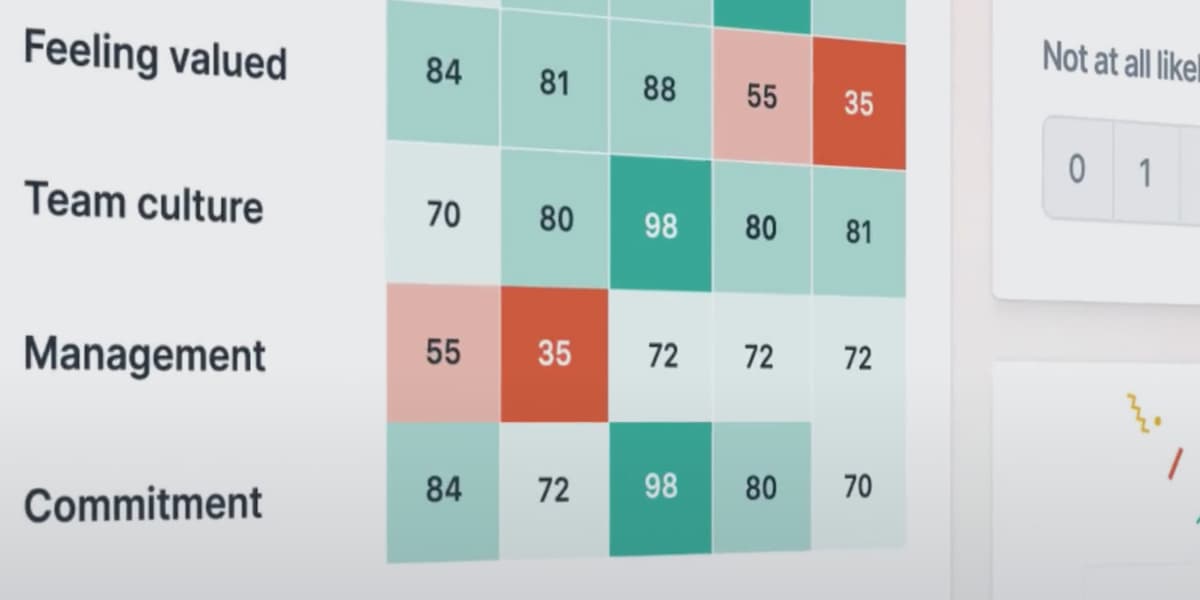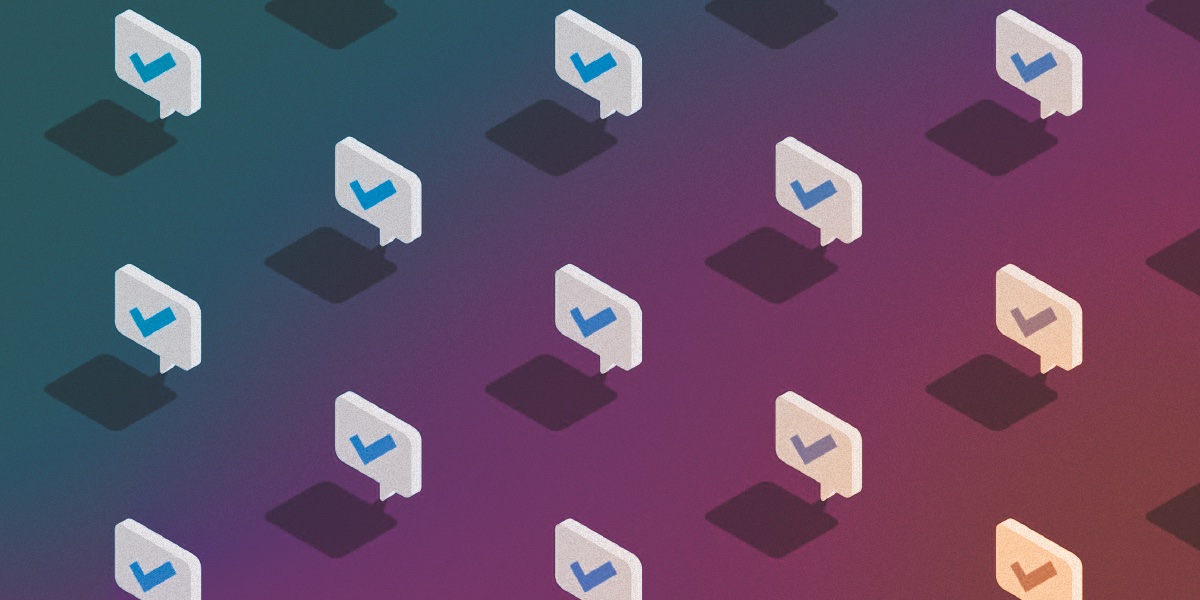Today, there’s software for just about everything. One 2019 study from SaaS management company Blissfully found that mid-sized companies actually use about 123 SaaS tools across their many departments. And between applicant tracking systems (ATS), employee survey platforms, hourly time-tracking tools, and other software, your HR team probably contributes significantly to that statistic.
With so many tools in the HR tech stack, it’s understandable that many teams want to consolidate and find a system that can house all of their HR needs in one place. For that reason, many businesses find a Human Resources Information System (HRIS) for their core HR, payroll, and benefits needs, as well as People management functions like recruiting, onboarding, goal-tracking, engagement, performance management, and more. But while certain functions lend themselves to being bundled this way, others don’t — performance management being one of them.
While it can be tempting to purchase an HRIS that checks all the boxes and offers every People management function your team needs, often the convenience and cost-savings can be too good to be true. After all, a poorly designed performance management system can be frustrating for your HR team to implement and administer, as well as confusing for your managers and employees to use — and what good is having a system that no one likes?
Here’s a closer look at why you shouldn’t settle for HRIS performance management offerings and why a stand-alone performance management tool might drive better results for your organization.
All-in-One, Master of None
HRIS platforms excel at streamlining HR, payroll, and benefits administration, like ensuring your employees’ health insurance elections feed accurately into payroll, your employee information (e.g. age, home address, manager, etc.) stays in sync across all of your HR systems, and more. Your HRIS serves as the engine behind all of your People administration tasks and is your source of truth for all things back-end HR.
But when it comes to performance management, most HRIS platforms don’t deliver the same quality experience you’d get with a proper performance management solution. Most systems have a complex user experience for both HR admins and managers, disjointed data storage, and poor customer support — all of which can block employee adoption. Not to mention, pulling historical review data and metrics from the system after reviews are complete can be a nightmare.
Sara Nascimento, former Head of People at California-based computer security firm Area 1 Security, learned firsthand about the risk of stretching an HRIS past its comfort zone. The company’s first performance tool was part of an “all-in-one” HRIS the team selected because it had offered the payroll features the company needed, and built-in performance management was an added bonus. When she tried to set up performance reviews in the HRIS, it became clear what the vendor was and wasn’t good at.
“My trigger moment was the administration,” said Nascimento. “I was very frustrated with the tool itself. It was hard to understand. I had to test it with one of my employees and work with them to see what was happening when I made changes to the review. It would go live before you could preview the flow yourself,” she said. In the next review cycle, Nascimento and her team had learned their lesson and implemented Lattice’s Performance tool to improve their reviews.
When done right, performance reviews deliver constructive feedback to each of your employees and empower them to grow personally and professionally at your company. But an ineffective performance software can frustrate managers, force them to spend more time on reviews than expected, and turn them off from the review process entirely.
On the other hand, the right review software can help streamline your managers’ efforts and cut down on back-end administration time, so People leaders can focus their efforts on sharing constructive feedback with their teams, coaching their employees, and having in-depth career conversations with them — rather than wasting time struggling with an ineffective system. And since these are the things that engage employees, drive retention, and inspire individuals to do their best work, choosing the right HR software is an integral part of building a company culture that values giving and receiving feedback.
Lack of Support and Resources
Since an HRIS primarily focuses on Human Resource management, benefits administration, and payroll, the majority of its call centers and support staff are experts in these specific disciplines. When it comes to ancillary product offerings, like performance management or employee engagement, you might not only have trouble getting someone on the phone, but you might also struggle to get the answers and individual support you need. For example, if you’re wondering how to customize review functionality to your business needs, your HRIS provider’s support staff might tell you the system isn’t set up to accommodate your request, or give you a clunky workaround to try.
Nascimento also ran into issues with HRIS support when her team was implementing performance reviews. While the vendor was great at answering payroll questions, it didn’t have on-staff expertise to answer questions about its own performance module. And giving prescriptive guidance about reviews or engagement surveys? That was out of the question.
That was enough for Nascimento. “It got us through that first year, but there’s no way that I would go through with using the tool again,” she said. She started the search for a stand-alone performance solution and switched to Lattice’s Performance tool shortly thereafter.
With Lattice, every customer has access to its Customer Experience team, which has helped over 2,000 organizations create performance management programs they love. Plus, customers can leverage additional resources like Lattice University, an online video library with answers to common questions and walkthroughs of new product features, and Lattice Advisory Services, which provides dedicated help to identify and execute the talent management strategies that fit your business’s unique needs. Additionally, helpful review and feedback templates can inspire how you format your own reviews and keep your employees focused on delivering helpful, timely feedback to their direct reports and peers.
Deprioritizing Professional Growth
Oftentimes, HRIS systems’ performance modules center around one-off review conversations. That means after a performance review is held, managers and their employees are never prompted or encouraged to revisit their conversations, evaluate progress, or update professional growth goals. While it’s important to have these formal review conversations, the true value for both your employees and your business lies in revisiting and reporting on these conversations throughout the year — not just during annual review time.
A performance review solution like Lattice can actually integrate with your company’s continuous feedback tools, like 1:1s, praise, feedback, goals, and updates, to promote ongoing professional growth conversations. With all of this information conveniently stored in one place, your managers can easily reference past discussions, check in on goal progress, assign new professional or personal goals, share feedback with their direct reports, and even recognize their employees’ hard work — instead of having to reference multiple systems, spreadsheets, or files for this information. That makes it even easier for People leaders to coach their teams and motivate their employees to grow their careers with your organization.
Combining Compensation and Performance
Traditional annual reviews are often associated with raises or bonuses. So when it comes time to have those important conversations, it can be hard to keep employees focused on their development and career growth, not dollar signs.
HR professionals have taken pains to separate the two — though that can be challenging when you’re running payroll and annual reviews within the same system. That’s where the nuance and flexibility of a dedicated performance solution can help steer the conversation.
“Implementing a next-generation performance management system is a great way to decouple performance from compensation,” said Phil Strazzulla, founder of HR technology assessment company SelectSoftware Reviews. He believes that the key to keeping performance conversations focused is to move past one-off annual reviews. That means opting for ongoing or even real-time feedback — two approaches that HRIS vendors struggle with but specialized solutions excel at.
By implementing weekly one-on-one meetings and encouraging managers to share feedback with their teams on a more regular basis, you can ensure your managers build an employee experience in which top talent continually understands how they can grow personally and professionally with your business. This can help keep your high-performing employees engaged and build a culture of ongoing feedback within your organization.
A Sub-Par User Experience
Having a performance management software that your HR team can successfully implement and administer is only half of the challenge — the other half requires you to select a system your managers and employees will actually use. However, since performance management is often not the primary focus of an HRIS, the functionality and UI of the module often take a backseat.
Why does this matter? If your review system is cumbersome and confusing to use, your employees will become frustrated and unengaged during the review season. This could affect the amount of time managers and employees spend writing thoughtful and helpful self, peer, and manager reviews, as well as the quality of their feedback. If that happens, all of your employees will suffer, since they will miss out on learning how they can be better teammates and professionals. And if this continues for a few review cycles, odds are your participation rates will plummet as employees decide the hassle of working with your review system, combined with the unhelpful peer or manager feedback, just aren’t worth the trouble.
For Brad Holliday, former Chief People Officer at Caravan Health, a company that manages accountable care organizations (ACOs) nationwide, finding a performance review software with a clear and easy-to-use UX was a must. Having used several performance management systems at different organizations over the years, Holliday learned early on that having a tool that’s easy for employees to use is the most important factor when it comes to adoption.
When Caravan Health discovered and partnered with Lattice, Holliday was pleased with how intuitive the platform was. “I don’t think it would have been easier if you had a real-life person there talking to each manager, holding their hand through the experience,” he said.
While most HRIS performance review modules aren’t designed with the employee end-user in mind, most stand-alone performance appraisal software is. At Lattice, we put people first in every sense. From employee surveys to performance reviews, every tool on our platform is easy to use and intuitive so every employee can leverage Lattice with little to no training — letting your team spend less time training employees and more time focusing on strategic People initiatives.
—
While HRIS vendors knock HR, payroll, and benefits administration out of the park, it takes a different breed of software to manage employee performance and engagement. That’s where a performance management solution can shine.
Lattice is a People management platform used by more than 2,500 organizations to drive performance and engagement. What’s more, we integrate with your favorite HRIS so your People data stays in sync. To see our software in action, sign up for a demo today.






